It looks like you're using an Ad Blocker.
Please white-list or disable AboveTopSecret.com in your ad-blocking tool.
Thank you.
Some features of ATS will be disabled while you continue to use an ad-blocker.
share:
In several areas of the island of Malta, and the nearby island of Gozo, there are intricate networks of parallel tracks carved into the limestone rock
which seem artificial origin. They are called "cart ruts". The ruts are up to two feet deep and more than 30km of them run in pairs criss-crossing the
island. This intricate network of "binary stone" is one of the trickiest puzzles that archeology trying for years to unravel. These parallel
grooves/tracks carved into the rocks reach up to a depth of 60 cm, with an average distance between 110 and 140 cm. One of the most intricate network
of grooves is located on the site of Misrah Ghar il-Kbir, a prehistoric settlement at Dingli Cliffs. The site was nicknamed "Clapham Junction" by
David Trump, because it reminded him of the same Railway Station in London.
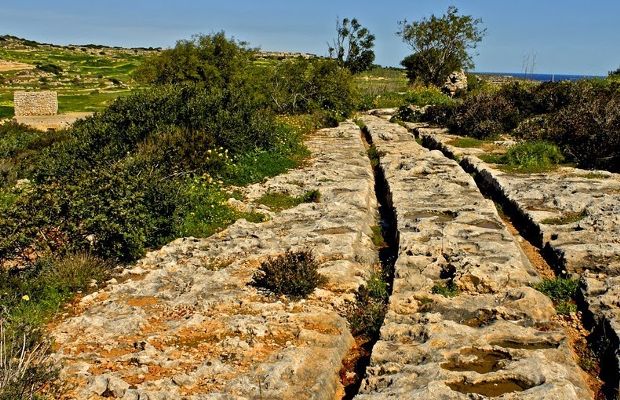
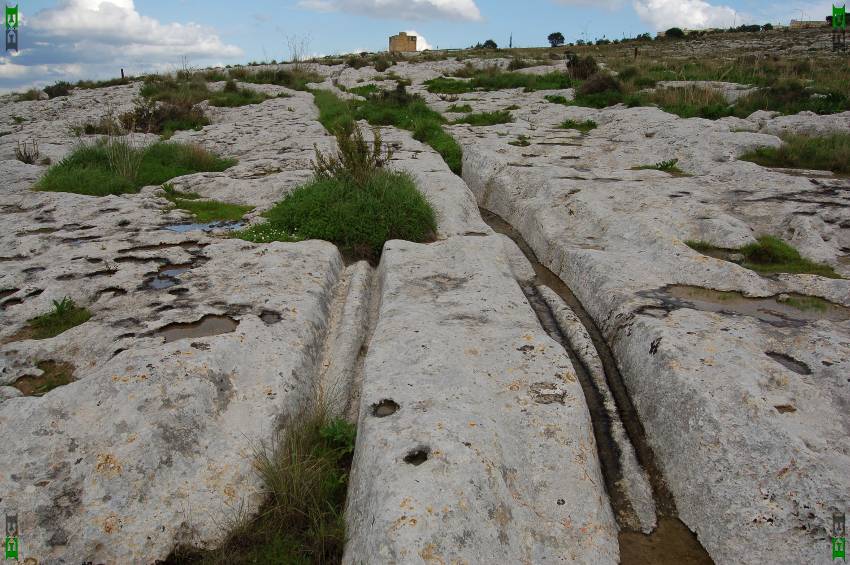
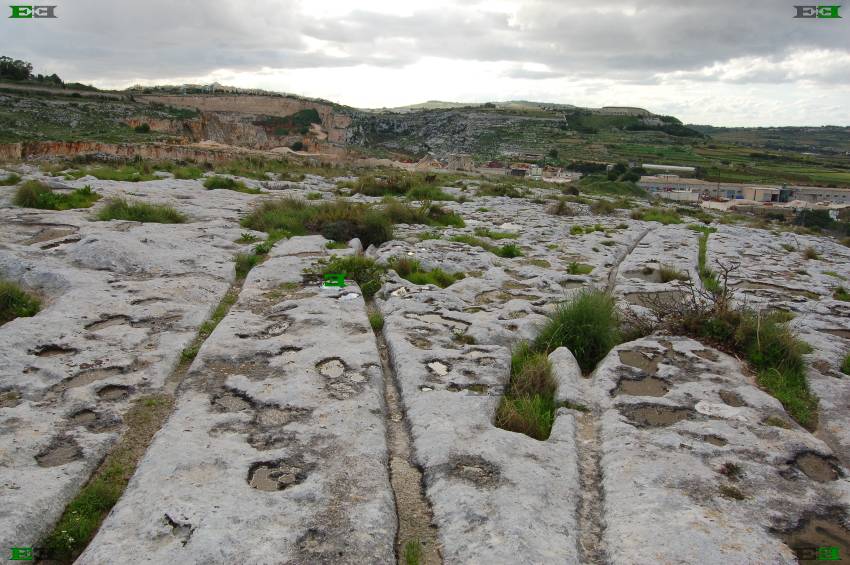
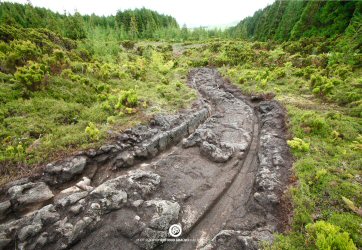

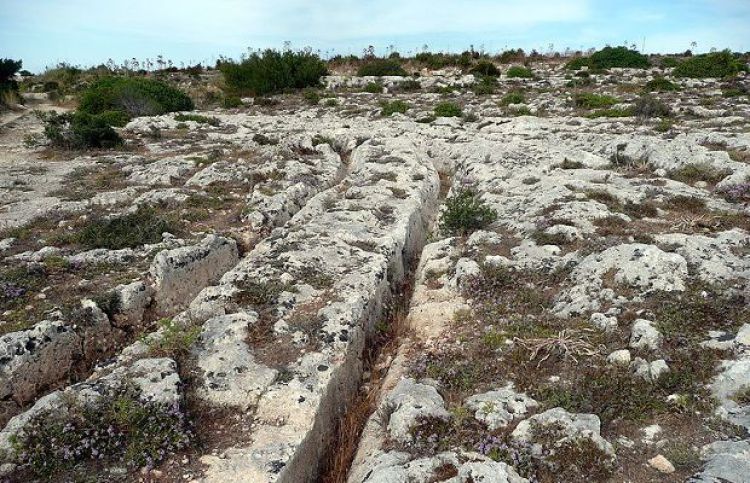

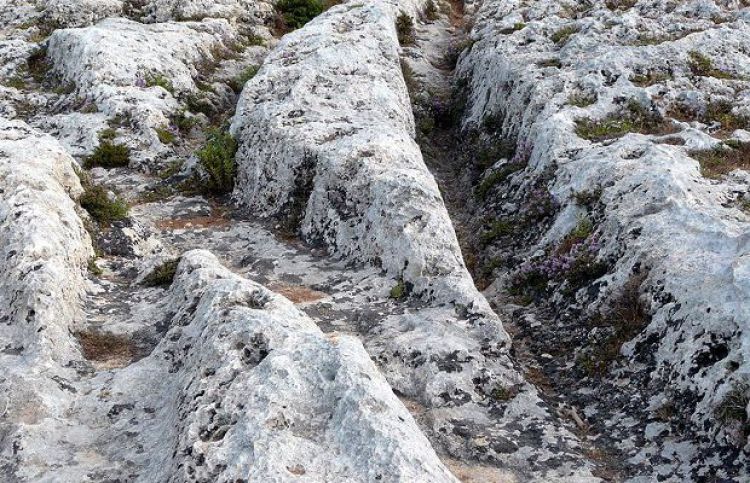
Some of them goes underwater....
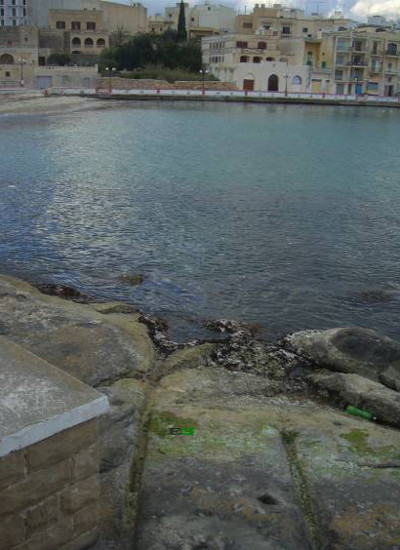
www.saeti.org...
Here one of the prosaic "scientific" explanation: web.archive.org...://www.port.ac.uk/aboutus/newsandevents/news/archive2009/april2009/title,94480,en.html
The possibly origin of the Cart Ruts with transport mediums like "grinding poles" known us "travoises" (drawing by Walter Hain, 1982).
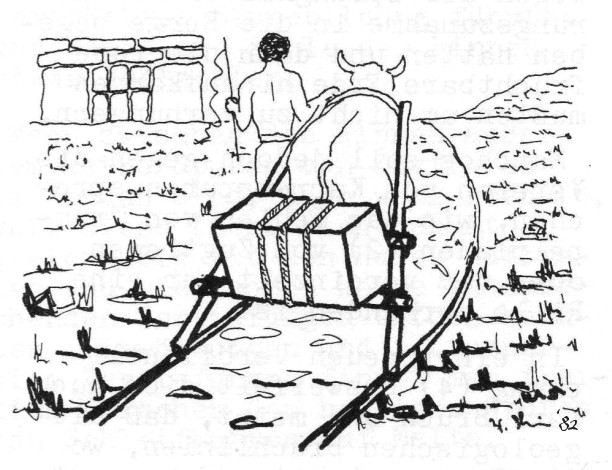
But,The real great mystery is that same kind of "parallel tracks" we can find in all Mediterranenan Area, not only in Malta...
Enjoy...








Some of them goes underwater....

www.saeti.org...
The island Malta was already settled probably 8000 years ago of Sicily. Still to 11,000 BC they was combined with the south Italian island. From the time by 5200 to 4600 BC there are the first lanes of human accomodations through cave finds. From 4600 BC are first dwellings and huts to be found and from about 3800 BC it began the Stone Age stage at Malta that left up to now impressive evidences which annual thousands of tourists allure. The megalith temples Mnjadra and Hagar Qim as soon as the Hypogaeum in the city Paola are the main attractions of the island from this time. Ceramic finds, artistic reliefs and paintings as soon as the famous "sleeping lady" show the amazing artistic work of the inhabitants of this period. From about 2500 BC this stage would end and the inhabitants left the island.
Here one of the prosaic "scientific" explanation: web.archive.org...://www.port.ac.uk/aboutus/newsandevents/news/archive2009/april2009/title,94480,en.html
The possibly origin of the Cart Ruts with transport mediums like "grinding poles" known us "travoises" (drawing by Walter Hain, 1982).

But,The real great mystery is that same kind of "parallel tracks" we can find in all Mediterranenan Area, not only in Malta...
Enjoy...
edit on 28-4-2014 by Arken because: (no reason given)
Maybe they were water ways? Or an old system for water to flow to certain spots?
originally posted by: Meldionne1
Maybe they were water ways? Or an old system for water to flow to certain spots?
I doubt.
The railway goes up and down Cliffs and Hills.

a reply to: Arken
Have not logged in for a while, thought I would as I am currently sitting nest to the cart ruts in San Gwann waiting for a friend whilst reading this.
Happy to see that its Arken posting as I have always appreciated your threads.
The ones on Dingli cliffs go to the sea and continue for sometime, you can view divers pics online. When my brother dives he has witnessed all sorts of unusal patterns and stone work.
I adore living here and always go off track, Malta is a fantastical island with much mysterious history.
Thanks Arken, back to the wilderness for me.
Have not logged in for a while, thought I would as I am currently sitting nest to the cart ruts in San Gwann waiting for a friend whilst reading this.
Happy to see that its Arken posting as I have always appreciated your threads.
The ones on Dingli cliffs go to the sea and continue for sometime, you can view divers pics online. When my brother dives he has witnessed all sorts of unusal patterns and stone work.
I adore living here and always go off track, Malta is a fantastical island with much mysterious history.
Thanks Arken, back to the wilderness for me.
originally posted by: Arken
In several areas of the island of Malta, and the nearby island of Gozo, there are intricate networks of parallel tracks carved into the limestone rock which seem artificial origin. They are called "cart ruts".
An excellent thread premise & a great find. I was absolutely unaware of these, so I'm really glad you created a thread about these unknown & mysterious tracks.
Also, I think this thread is particularily extensive & well presented. I very much look forward to what others have to say. Perhaps someone one here can shed some light on the origins of this phenomenon.
Again, a great find ... S&F!
Looks like the same kind of principle used in the "Diolkos wagonway"- which is suspected to be one of the earliest European examples of "rail
transport".
en.wikipedia.org...
Diolkos was used for transporting small boats over land (correlating with the previous observations that some are now underwater..rising sea levels formerly docks/entrance ?
According to Wiki:
"The scientist Tolley aimed to establish the manpower needed to haul the vessels over the isthmus ridge. Assuming that a trireme soaked with water weighed 38 tons including its trolley, and that a man can exert a force of 300 N over an extended period of time, the pulling teams—depending on the slope and the surface of the cart track—must have numbered between 112 and 142 people, with a combined exertion of force of 33 to 42 kN, or around 3.8 tons weight. Bringing the trolley up to speed may have required as many as 180 men. Assuming a speed of 2 km per hour over an estimated length of 6 kilometres, the transfer from sea to sea would have taken three hours to complete".
Having 100 -200 plus people to pull shows how important these things were both commercially and strategically.
en.wikipedia.org...
Diolkos was used for transporting small boats over land (correlating with the previous observations that some are now underwater..rising sea levels formerly docks/entrance ?
According to Wiki:
"The scientist Tolley aimed to establish the manpower needed to haul the vessels over the isthmus ridge. Assuming that a trireme soaked with water weighed 38 tons including its trolley, and that a man can exert a force of 300 N over an extended period of time, the pulling teams—depending on the slope and the surface of the cart track—must have numbered between 112 and 142 people, with a combined exertion of force of 33 to 42 kN, or around 3.8 tons weight. Bringing the trolley up to speed may have required as many as 180 men. Assuming a speed of 2 km per hour over an estimated length of 6 kilometres, the transfer from sea to sea would have taken three hours to complete".
Having 100 -200 plus people to pull shows how important these things were both commercially and strategically.
edit on 28-4-2014 by Jukiodone because: (no reason given)
edit on 28-4-2014 by Jukiodone because: (no reason given)
a reply to: jeep3r
I think that the whole Mediterranean Area for its ancient and dark past is really a great mystery and it holds most of its secrets...underwater.
What we watch today are only their ancient mountains
I think that the whole Mediterranean Area for its ancient and dark past is really a great mystery and it holds most of its secrets...underwater.
What we watch today are only their ancient mountains
edit on 28-4-2014 by Arken because: (no reason given)
I wander if there is any correlation with these incredible structure underground The
Hypogeum of Hal-Saflieni
a reply to: Arken
I suspect we need to rethink about the Med because it has been above sea level in the past and then, as current today, below it. So much of the information we can gain is probably under layers of silt etc.
I think it depends of one's perspective of the past because one has to remember that regimented archaeology only accepts what it can see - sometimes with a dodgy interpretation of that, before one gets to actually thinking and using our imagination of what existed and what its purpose actually was for people then.
Perhaps we are now so removed from ancient man's thinking that as the gap gets longer, it is harder and harder for us to understand what their linkage/compatibility with the animal kingdom was. Something we don't seem to consider is that our psyche was taken from its focus on the animal world and environment and forced into the religious world onto invisible supernatural god worship. This lifted our attachment from our earthly roots to something else completely different and so our perspective changed.
With those ruts being so deep, either they invented the wheel considerably earlier than we think, and simply looking at a circle and considering how easily it would run were it in wood, I can't see that as so much of a wild step, or they were worn by dragging sticks as in your picture. Which doesn't exactly fill me with confidence as a means of moving heavy objects. Perhaps they were some kind of sledge tracks deliberately carved initially and then all signs of carving long disappeared with use.
I suspect we need to rethink about the Med because it has been above sea level in the past and then, as current today, below it. So much of the information we can gain is probably under layers of silt etc.
I think it depends of one's perspective of the past because one has to remember that regimented archaeology only accepts what it can see - sometimes with a dodgy interpretation of that, before one gets to actually thinking and using our imagination of what existed and what its purpose actually was for people then.
Perhaps we are now so removed from ancient man's thinking that as the gap gets longer, it is harder and harder for us to understand what their linkage/compatibility with the animal kingdom was. Something we don't seem to consider is that our psyche was taken from its focus on the animal world and environment and forced into the religious world onto invisible supernatural god worship. This lifted our attachment from our earthly roots to something else completely different and so our perspective changed.
With those ruts being so deep, either they invented the wheel considerably earlier than we think, and simply looking at a circle and considering how easily it would run were it in wood, I can't see that as so much of a wild step, or they were worn by dragging sticks as in your picture. Which doesn't exactly fill me with confidence as a means of moving heavy objects. Perhaps they were some kind of sledge tracks deliberately carved initially and then all signs of carving long disappeared with use.
originally posted by: Arken
I wander if there is any correlation with these incredible structure underground The Hypogeum of Hal-Saflieni
they had to haul the diggings out
There are so many mysteries surrounding ancient ruins, I can't help but wonder if civilization was much more advanced than is presently thought.
I would love to know the secrets that are long buried under water! I suspect the acceptable dating methods are all wrong; but I could be wrong!
I would love to know the secrets that are long buried under water! I suspect the acceptable dating methods are all wrong; but I could be wrong!
I see rocks.
Just kidding, bud.
Thanks for posting the story. I know there have been other threads about these sort of ruts. I like the pole theory, as the distance between the ruts would be constant if it were caused by wheels fastened to an axle that caused them.
Just kidding, bud.
Thanks for posting the story. I know there have been other threads about these sort of ruts. I like the pole theory, as the distance between the ruts would be constant if it were caused by wheels fastened to an axle that caused them.
My take on the ruts:
they lack the uniformity that one would expect if they were what is claimed. Not the depth of them, but the width. You see some that look like they were cut with near laser precision. And others that look like they were crudely scooped out with a spoon.
I would be more prone to believe some sort of symbolic meaning. But would love to read any meaningful discussion on the topic.
they lack the uniformity that one would expect if they were what is claimed. Not the depth of them, but the width. You see some that look like they were cut with near laser precision. And others that look like they were crudely scooped out with a spoon.
I would be more prone to believe some sort of symbolic meaning. But would love to read any meaningful discussion on the topic.
Maybe they filled the ruts with gasoline or oil and lit them on fire...so,there would be miles of flames sending a message to the gods! ...ok way
outside the box, I know, but just had that bizarre thought....and couldn't resist
And on a better thought ....since the ruts go into water, and are not even allowing for an axle....what if...they were a boat launch? But the boats
were slid along a wooden scaffolding that fit into the ground, or something along those lines...So the boats were elevated , not touching the ground
but slid along wood or something that has long rotted and is no longer there.
a reply to: Meldionne1
People of this region had mazes that they walked. So a maze aspect wouldn't surprise me.
But your idea seems to be akin to a rail type system. That, too, seem possible. I am not familiar with what the insides of the grooves look like. Do they retain any cut marks? Or are they all wear marks? Any nail type holes or anything?
What about your prior idea of fire....could there have been lantern type things illuminating path?
Good ideas.
People of this region had mazes that they walked. So a maze aspect wouldn't surprise me.
But your idea seems to be akin to a rail type system. That, too, seem possible. I am not familiar with what the insides of the grooves look like. Do they retain any cut marks? Or are they all wear marks? Any nail type holes or anything?
What about your prior idea of fire....could there have been lantern type things illuminating path?
Good ideas.
originally posted by: bigfatfurrytexan
a reply to: Meldionne1
People of this region had mazes that they walked. So a maze aspect wouldn't surprise me.
But your idea seems to be akin to a rail type system. That, too, seem possible. I am not familiar with what the insides of the grooves look like. Do they retain any cut marks? Or are they all wear marks? Any nail type holes or anything?
What about your prior idea of fire....could there have been lantern type things illuminating path?
Good ideas.
Thanks! ...they were odd thoughts...mix alittle sleep deprivation with a glass of wine and "poof!" I can solve the worlds problems....kidding...I do like the maze idea though . The origin of an amusement park!
edit on 28-4-2014 by Meldionne1 because: (no reason given)
new topics
-
This is adorable you guys!
General Chit Chat: 4 hours ago -
Reprehensible Behavior
US Political Madness: 5 hours ago -
Defending the need for adherence to Old Testament commandments under the new covenant of Christ
Conspiracies in Religions: 6 hours ago -
Those Drones over NJ and elsewhere
Aliens and UFOs: 10 hours ago -
South Korean coup was an attempt to start WW3
World War Three: 11 hours ago -
Archer aviation and the NJ drones
Aircraft Projects: 11 hours ago
top topics
-
Those Drones over NJ and elsewhere
Aliens and UFOs: 10 hours ago, 8 flags -
Reprehensible Behavior
US Political Madness: 5 hours ago, 8 flags -
South Korean coup was an attempt to start WW3
World War Three: 11 hours ago, 7 flags -
This is adorable you guys!
General Chit Chat: 4 hours ago, 7 flags -
Archer aviation and the NJ drones
Aircraft Projects: 11 hours ago, 5 flags -
Defending the need for adherence to Old Testament commandments under the new covenant of Christ
Conspiracies in Religions: 6 hours ago, 5 flags
active topics
-
George Stephanopoulos and ABC agree to pay $15 million to settle Trump defamation suit
Mainstream News • 23 • : Brotherman -
The Acronym Game .. Pt.4
General Chit Chat • 1015 • : JJproductions -
Pelosi injured in Luxembourg
Other Current Events • 45 • : rickymouse -
Nov 2024 - Former President Barack Hussein Obama Has Lost His Aura.
US Political Madness • 19 • : Connector -
Post A Funny (T&C Friendly) Pic Part IV: The LOL awakens!
General Chit Chat • 7911 • : KrustyKrab -
Sky Intruders - Drones, Deception & One Weird UFO Video : Weaponizes : Episode #62
Aliens and UFOs • 7 • : DontTreadOnMe -
They Know
Aliens and UFOs • 97 • : DontTreadOnMe -
Will all hell break out? Jersey drones - blue beam
Aliens and UFOs • 69 • : DontTreadOnMe -
The Mystery Drones and Government Lies --- Master Thread
Political Conspiracies • 103 • : Zaphod58 -
Those Drones over NJ and elsewhere
Aliens and UFOs • 14 • : DontTreadOnMe
